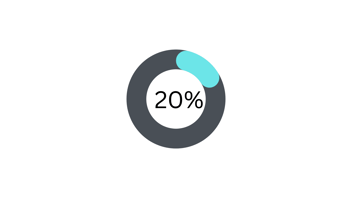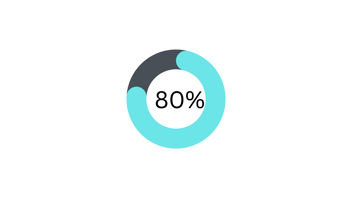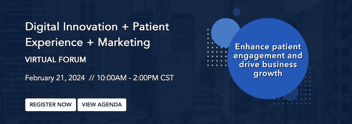Healthcare Innovation Patient Engagement Virtual Day Recap
Yesterday, a panel gathered for The New Dynamics of Patient Engagement in a Changing Operational and Clinical Landscape. It included:
-
John Donohue, Vice President of Information Services - Entity Services at Penn Medicine
-
Spencer Snyder, Insights Director at KLAS Research
-
Joshua Titus, CEO and Founder at Gozio Health
-
Mark Hagland, Editor-in-Chief at Healthcare Innovation
Mark Hagland started with an interesting introduction. “I am absolutely fascinated by the topic of patient engagement/patient experience. Most of us have heard of the strange myth from Indian literature, the six blind men and the elephant. So there was a king who had six blind advisors, which always struck me as a little bit odd. But anyway, he had six blind advisors. And one day he decided to test them so he lined them up and he brought in an elephant and he had each one touch a part of the elephant. And as we all know, from the myth, each one touched a different part. So one touched the trunk, one the tail, one touched the foot, and they thought they were touching a completely different animal. What I think is fascinating about that myth applies to the patient experience and patient engagement. I like to say if you were to gather six or 10 senior leaders in healthcare together in a room, and ask them to describe patient engagement or the patient experience and what that is, you would get 20 different descriptions. People are working on very different things that they're calling patient engagement or the patient experience. And really, we're kind of all over the map. So whenever one starts to talk about this, you know, I think of those six blind advisors touching different parts of the elephant.
And here are some highlights from the panelists about trying to put more definition to patient engagement and what the future looks like:
Spencer: What we've realized through our research was the need for healthcare organizations to better accommodate patients and to decrease barriers to effective care. What we also recognized is that frequently absent from patient engagement initiatives are patients.
Joshua: To piggyback on that, we say patients are getting impatient. In other words, it's the Amazon effect like I have to wait two days. That's just irresponsible that I would have to wait that long for this to arrive. So we're getting impatient. And it created something I call a medium carrot, big stick problem for healthcare. And that medium carrot is the fact that 60% of people on surveys say that they want their healthcare experience to mirror other areas of their lives in terms of how things are accessible via mobile, that things are easy, right? That convenience piece that we are used to and that 60% said they want, I'm gonna call that a medium carrot. Do the right thing. Put the answers where the questions are being asked. The big stick is 90% of people don't feel obligated to stay with a provider that has a poor digital experience. So in other words, you gotta do it. You have to offer the experience and you have to get it right. So that's the medium carrot big stick problem that I see has been created. And it's around expectations that were already in play prior to the pandemic, but I think the pandemic has accelerated that expectation. So that is what we see from healthcare systems today. We need to do it and we need to get it right.
Mark: We're all ultimately patients whether we're actively patients right now, and we're all consumers in the world. And that, to me, is an interesting fact about the patient experience. As we've been discussing, the first time I ordered a pair of running shoes during the pandemic, they sent me the shoes and then they had this foldable box and here's the box and here's the label. So if for some reason these shoes aren't the ones you want, send them back to us. Here's the label. I just thought, wow, I wish healthcare could do that.
Joshua: We did a survey that really underscores that gap. 80 to 90% of providers felt like they were doing a pretty good job on digital but less than 10% of patients in another survey agreed that a providers’ mobile app meets their needs. So there's a huge gap there. And I think it really does play into what Spencer mentioned earlier, but the idea is, we're still screwing up the easy stuff.
John: I would agree with what Josh said. It's a target rich environment. There's no shortage of opportunities. I think it's identifying the ones that get the most bang for the buck and are going to have the biggest impact on the patient engagement and patient experience. In a system like ours, it takes time to do some of this stuff. So what seems like a small type of effort really takes an awful lot. When you're doing it at scale, it just takes time and you have to be patient. So I would agree completely with what we've been talking about so far. But just recognition that even easy stuff at scale is so complex.
The panelists went on to discuss resistance to change and how that hampers efforts as well. They agreed that the important thing is to walk in the patients’ shoes. Whether you call it patient engagement or digital front door. The challenges are the same if you have a patient experience officer or not.
Joshua suggested not letting the barriers that come up in healthcare stop you from being creative and thinking about all the things patients might want. Even if you can’t do them all, the main thing is that you’re thinking about it from their point of view. And you don’t have to have a chief experience officer to do great things for patient experience.
John: You know, we do not have somebody that's titled as a Chief Patient Experience Officer, but I'd like to think of us in a way where every employee is empowered to be that. It's nice to have an executive or senior asset role that is creating a strategy and cascading that down to people. But think how powerful it is if you can empower everybody from the volunteer to the physician. And I think that's the approach we've taken to empower folks. I watch our CEO and he'll be walking through the hallways on the way to a meeting and someone is looking for something and he will literally stop what he's doing and go over and spend five minutes talking to them. And it just sets a great example that we're all responsible for that. I do think your people need to feel empowered and feel some ownership of the patient experience such that they do pause and slow down and say, let me see what I can do here. I'm an ambassador. What can I do to just make that a little bit easier? And if you do that 100 times a day. It's amazing.
The group agreed in the end that it isn't so much about who leads it or what you call it, it’s about looking at things from the patient's perspective. It also isn’t about doing things that are “sci-fi” as Joshua said. There are lots of simple opportunities to improve experience. At the same time, be open to all the ideas and you can build that digital front door–or whatever you choose to call it–over time.
For more insights listen to the full recording on Healthcare Innovation today.


